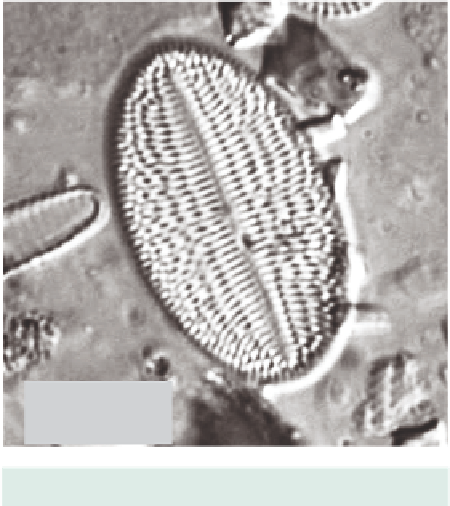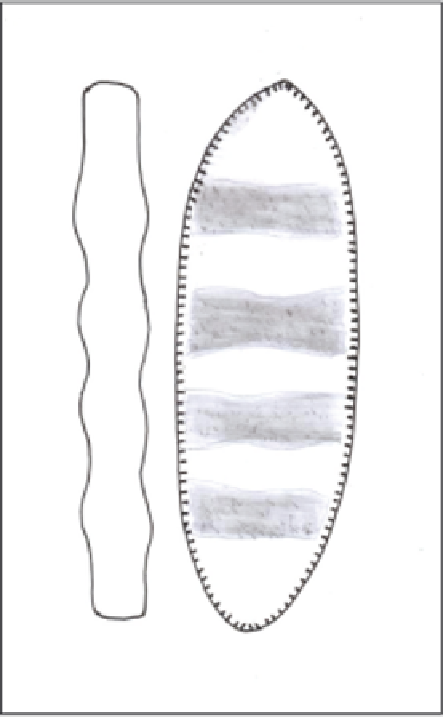Environmental Engineering Reference
In-Depth Information
A
B
10 μm
Figure 4.64
Cocconeis
. Valve view of this sedimen-
tary diatom. Acid digest, lake sediment sample. Repro-
duced with permission of M. Capstick.
153
(152) (a) Cells not as broadly elliptical with
bluntly rounded ends, both valves with a
true raphe which lies within a long thick-
ened ridge. Two chloroplasts with lobed
margins, one either side of the long apical
axis.........................
Diploneis
20 μm
Figure 4.65
Cymatopleura elliptica.
(A) girdle view;
(B) valve view.
The raphe is situated between prominent
silica ridges. Striae on the valve surface
run from the raphe to the margin. Chloro-
plasts may contain a pyrenoid. Cells 20-
130 μm long, 10-60 μm wide. Widespread
in mainly oligotrophic waters on bottom
deposits, some species brackish or marine.
Bacillariophyta. Plate XXIII.
Cells are elliptical often with a central
'waist'. The valve surface is character-
istically undulate, particularly visible in
girdle view, giving it a transverse banded
appearance. The raphe is on a raised ridge
running around the valve margin. A single
large lobed chloroplast is present. Found
on bottom sediments, commonly epipelic.
Widespread and common. Cells 30 to
>200 μm in length, 20-60 μm wide. Bacil-
lariophyta. Fig. 4.65.
(b) Cells without thickened ridges along
most of the length of the raphe . .....
154
154
(153) (a) Cells with a prominent transverse
undulate surface in girdle view and banded
transverse shaded areas in valve view.
Isopolar. ................
Cymatopleura
(b) Cells without undulate surface.
Lanceolate to oval in shape, sometimes




Search WWH ::

Custom Search